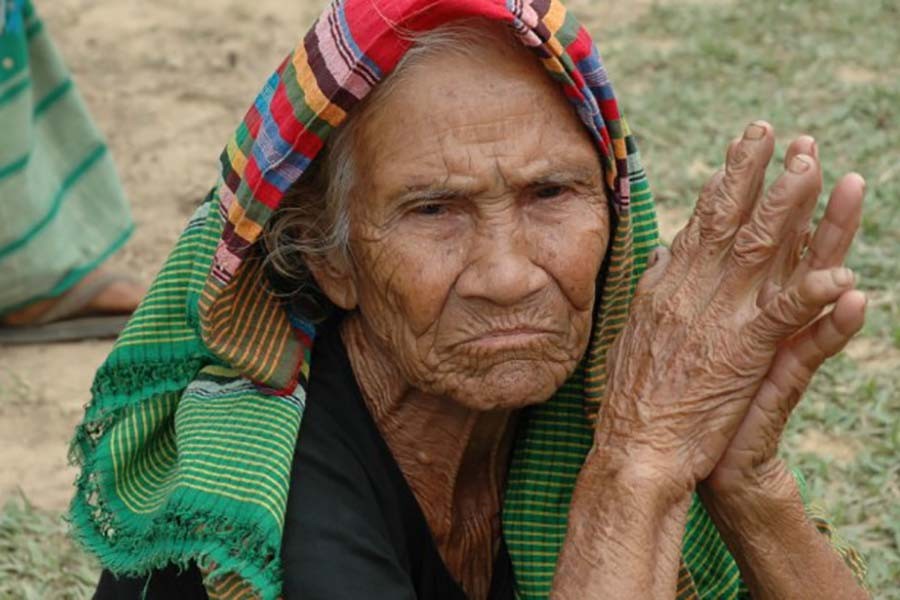A media report on the sufferings of rural elderly people in receiving their old-age allowance at a local-government office is depressing. Long agonising wait by people entitled to the allowance for receiving it is routine now. Grievances over irregularities in the benefit's distribution system have also been rife. Lately, deduction of Tk 200 from the tri-monthly allowance payments of Tk 1500 (Tk 500 a month) has greatly disconcerted the elderly recipients. Since they are desperately in need of the dole, though paltry, the elderly appear to have no choice but to accept the cruel cut. A section of employees at the offices concerned have been singled out for the irregularity.
As part of the government-run social safety net programme, the old-age allowance scheme now covers a considerable part of the country. Beginning with 430,000 recipients in 1997-98, it now touches a countrywide figure of around 3,500,000. The number has continued rising by the year. As studies have recorded, the country at present has 13 million elderly people. It will soar to 18 million in 2025, 45 million in 2050 and 55 million in 2061. According to other findings, nearly 20 per cent of the country's population is set to comprise aged people by 2050. The percentage of children will be 19, showing the ratio to be equal by that year. Given this demographic trend, the country's elderly people deserve to be veritably at the centre stage of age-specific welfare programmes.
Marginalised at social and family levels, the elderly people continue to emerge as a national worry. It is the vulnerable section among the elderly poor in general who needs to be particularly focused in the allowance programme. They are mostly voiceless and remain deprived of the strength and connections to place themselves among the benefit seekers. Coming to goals, the allowance scheme is aimed at ensuring the elderly dignity, medical treatment and other privileges. These are among the some basic requirements during old age -- the most prominent of them being proper medical support. It is this prerequisite, the inadequacy of which brings untold miseries to the average rural aged. Keeping the factor in perspective, social welfare experts stress fast widening of the allowance coverage, as well as an increase in the amount of money. Neglect to the rural elderly nowadays begins from the family. Joint families have long started disintegrating also in villages. It is the old people who are made to bear the brunt, with society at large turning cold towards them.
The old age allowance scheme, undoubtedly, is a beacon of hope for the aged. In order to make it satisfactorily effective, a flawless mechanism ought to be in place. But the slipshod handling of the programme in this country continues to draw criticism from many quarters. The ills begin plaguing the programme since the start of eligibility determination at the Union Parishad (UP) level. Lobbying, political favour-seeking, biased targeting, mostly aided by local middlemen, have considerably stained the ambitious welfare scheme. That the obscure ultra-poor segments of rural communities primarily fall victim to these dampers is implied. The onus lies with the UP administration. Given the pervasive irregularities that beset the programme aimed at ensuring for the aged a secure and meaningful life, freeing it of all malpractices becomes an imperative. Also as one of the Sustainable Development Goals, it should be foolproof.


